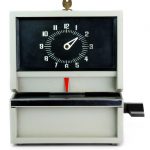Control Restaurant Labor Cost with the FTE
This is the secret to avoiding overtime in your restaurant. It’s also the secret to having qualified, trained employees in your restaurant. Follow this tip and you can stop settling for warm bodies and start hiring good people who will do the job right.
The answer is to always have two more full time equivalents (FTEs) than you need. An FTE is whatever number of people it takes to equal one full-time person.
FTE stands for “full-time equivalent,” meaning how many people it takes to equal one full-time person. For back-of-house staff, such as cooks, dishwashers, etc., one FTE equals 40 hours. If you have two part-time cooks who both work 20 hours a week, together they equal one FTE. So for every back-of-house employee who can work 40 hours, they equal one FTE.
For front-of-house staff, such as servers, hosts, bussers, runners, etc., one FTE equals five shifts. If you have two part-time servers — one who can work three shifts a week and one who can work only two shifts a week — that’s five shifts and together they equal one FTE.
The reason to use shifts and not hours for front-of-house is most restaurants have servers who will never work a total of 40 hours a week, even if they work all seven days. Every front-of-house employee who can work five shifts a week equals one FTE.
Flexibility is one of the attributes of the restaurant industry. Hourly workers like the ability to change their schedule from one week to the next to take advantage of vacations, events, friends and family in town, and parties, to name a few. With this in mind, even the most perfect manpower plan can be thrown an unexpected curve.
Want to control restaurant labor cost? Want to reduce your turnover? Start paying attention to your FTE.
To learn more about systems that will teach you how to control restaurant labor cost, read our free special report, Breaking Away from the Insanity: How to easily take control of your restaurant and make more money. Download it here.





